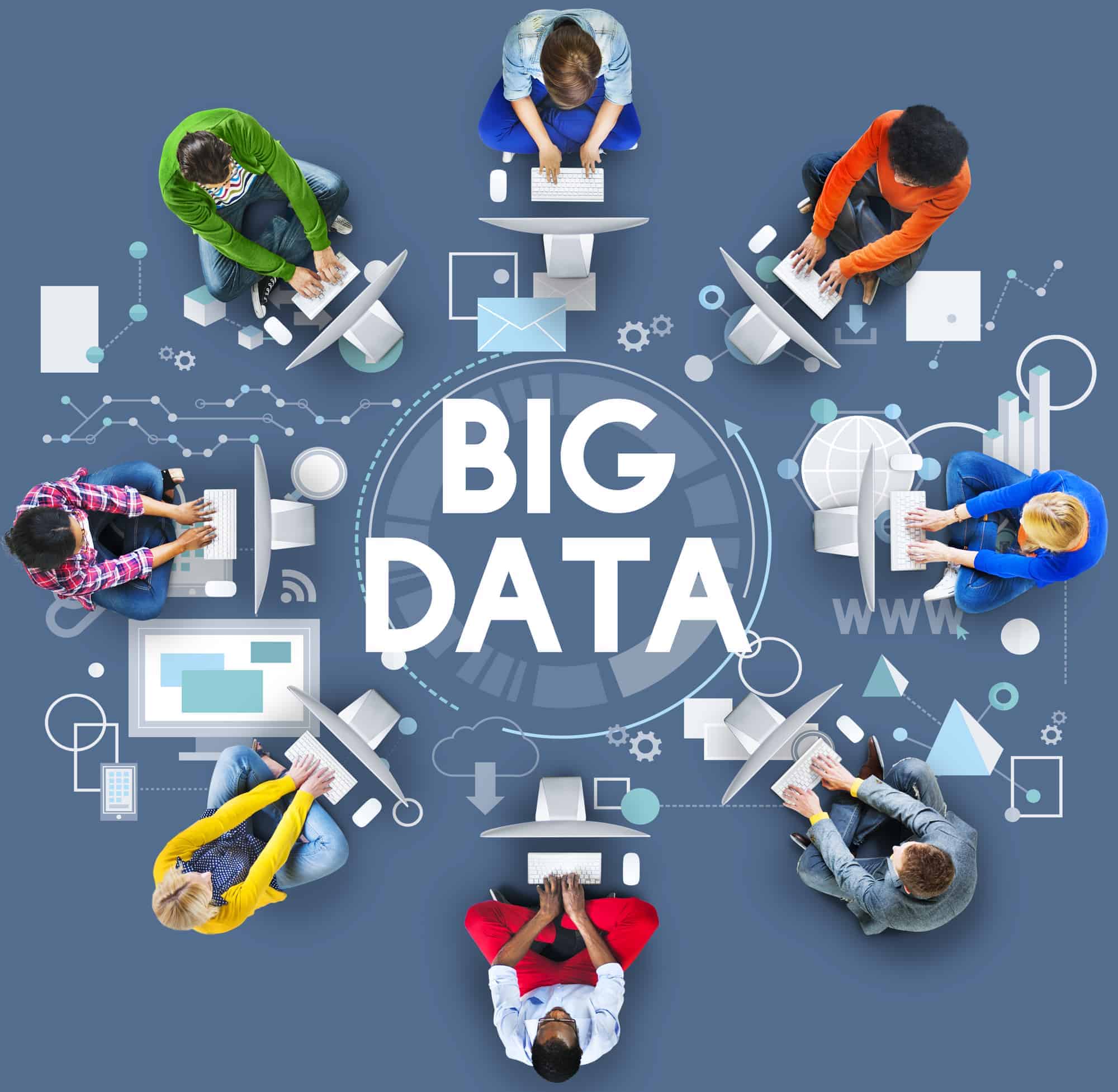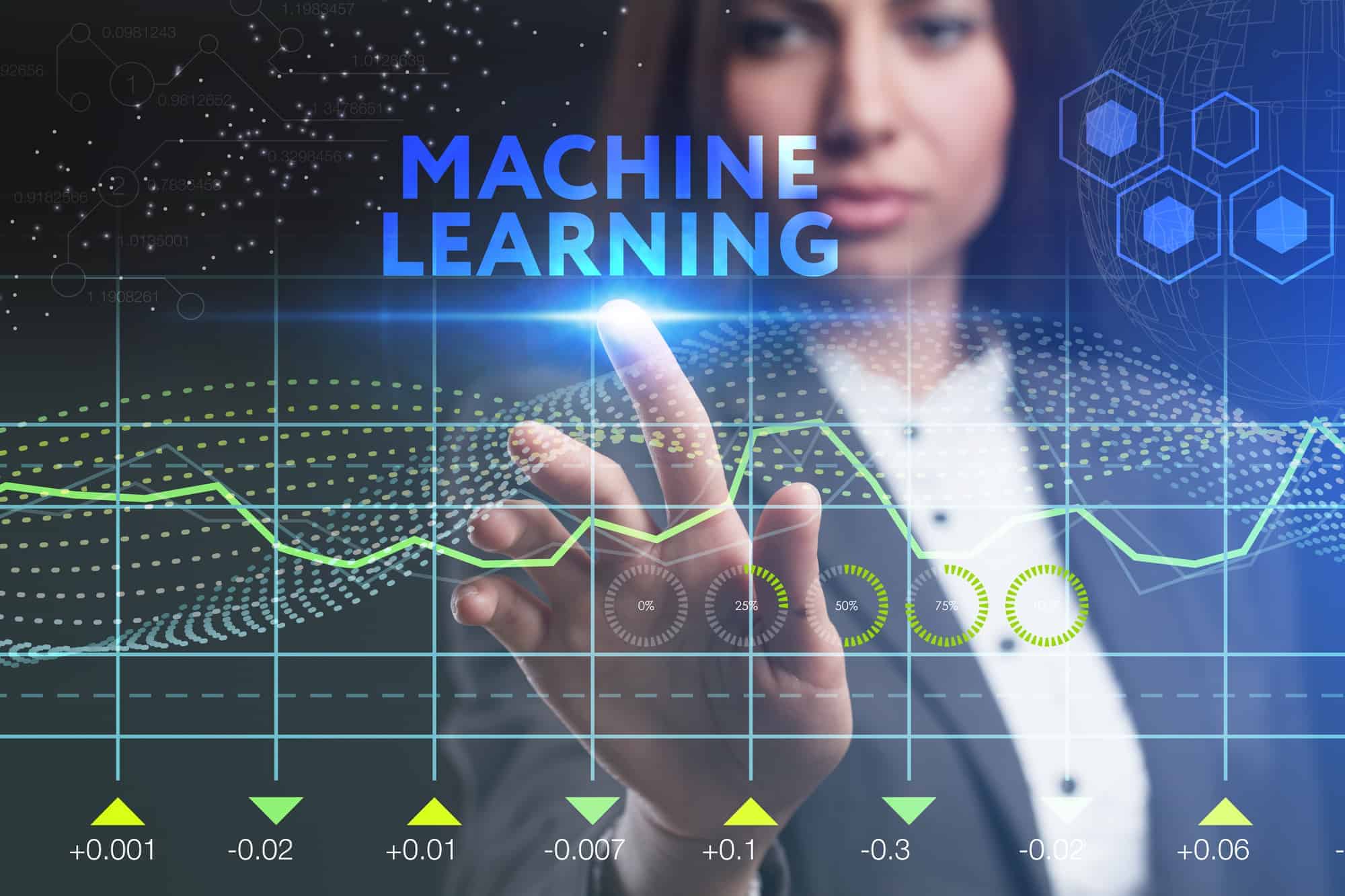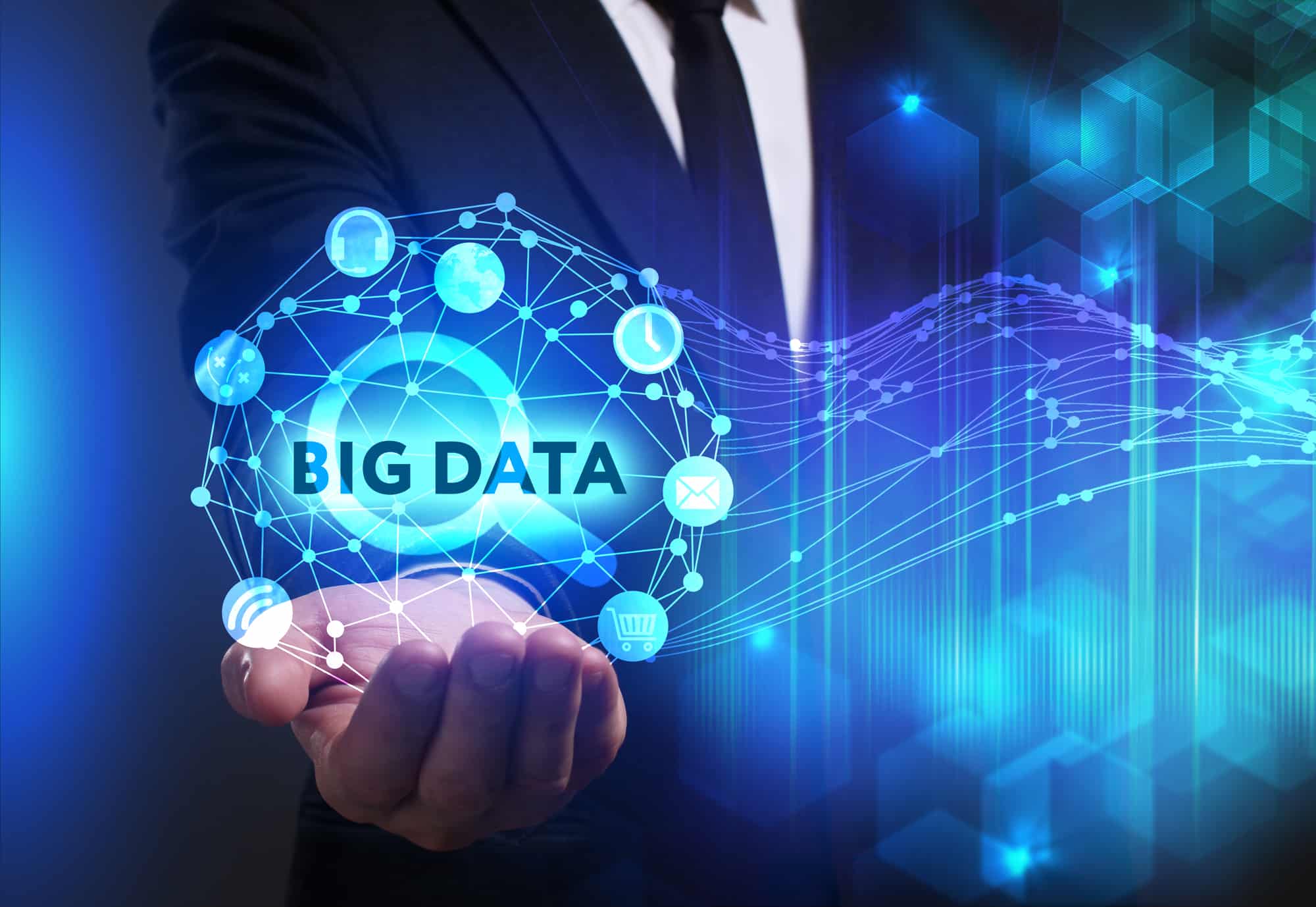Big data is reshaping the landscape of data analysis, and Python stands at the forefront of this revolution. Whether you’re a beginner or looking to enhance your skills, setting up Python for big data tasks is your first step towards mastering this powerful tool. Let’s dive into how you can equip Python for handling large datasets.
Essential Python Libraries for Big Data

Python, renowned for its simplicity and power, offers a plethora of libraries tailor-made for big data processing. Two libraries that are indispensable are Pandas and NumPy.
Pandasis a data manipulation powerhouse. It simplifies tasks like data cleaning, reading, and writing data. It’s particularly adept at handling structured data, such as tables, where its DataFrame structure is invaluable. A significant feature of Pandas is its ability to handle large datasets efficiently, making it a go-to tool for big data practitioners.
NumPy, on the other hand, excels in numerical computing. It’s the backbone of many Python-based data science tools and is critical for performance-intensive tasks. NumPy arrays, for instance, are more memory-efficient than standard Python lists and are key in handling large numerical datasets.
A lesser-known yet powerful library isDask. It extends Pandas and NumPy to larger-than-memory datasets, allowing parallel computing and scalability. Dask is particularly useful for those who are stepping into the realm of really big data.
Optimizing Python Environment for Large Datasets
Handling large datasets requires more than just powerful libraries; it requires an optimized Python environment. Here are a few tips to ensure your Python setup is ready to tackle big data:
- Memory Management: Python, especially with libraries like Pandas, can be memory-intensive. To manage large datasets, consider increasing your system’s RAM or using cloud-based platforms that offer scalable resources.
- Use Efficient Data Formats: Working with big data often involves dealing with various data formats. Formats like HDF5 or Parquet are designed for efficient storage and quick access, particularly with large datasets.
- Parallel Processing: Python’s Global Interpreter Lock (GIL) can be a bottleneck for CPU-bound tasks. Utilizing libraries like Dask or multiprocessing can help you perform parallel processing, making full use of your CPU’s capabilities.
- Profile Your Code: Regularly profiling your Python code helps identify bottlenecks. Tools like cProfile or line_profiler provide insights into which part of your code is consuming the most resources.
- Data Chunking: When working with exceptionally large datasets that can’t fit into memory, consider processing the data in chunks. Pandas, for instance, allows you to read and process data in smaller, manageable chunks.
Data Importation and Manipulation Techniques in Python
Embarking on a journey into the world of data with Python? Great choice! Python isn’t just a programming language; it’s a gateway to handling, analyzing, and interpreting data. Let’s dive into the core of Python’s prowess in data importation and manipulation.
Efficient Data Import Methods for Various Data Formats

Data comes in all shapes and sizes. Knowing how to efficiently import different data formats is like having a Swiss Army knife in data analysis. Here’s a fun fact: According to a survey by Kaggle in 2020, over 50% of data analysts spend most of their time in data cleaning and preparation. This is where Python shines!
- CSV Files: The bread and butter of data formats. Python’s
pandas.read_csv()function is your best friend here. It’s straightforward and handles CSV files like a charm. - Excel Files: Got a spreadsheet to analyze?
pandas.read_excel()is at your service. It can even handle different sheets in a workbook. - JSON and XML: For web data,
pandas.read_json()andxml.etree.ElementTreeare go-to solutions. They can parse data from APIs or web services seamlessly. - SQL Databases: Python can connect to SQL databases using libraries like
SQLAlchemyorsqlite3. Importing data directly from databases streamlines your workflow.
Advanced Data Manipulation with Pandas and NumPy
Once you’ve imported your data, what’s next? Manipulation and transformation! Pandas and NumPy are the dynamic duo of Python data manipulation.
- Pandas for Data Wrangling: Imagine you have a dataset with missing values. No problem! Pandas’
fillna()function lets you handle them with ease. Need to reshape your data?pivot_table()has got you covered. - NumPy for Numerical Operations: Handling numerical data? NumPy arrays are optimized for numerical operations. They’re fast and memory-efficient – a necessity when dealing with large data.
Let’s put it into perspective with an example. A study by the University of California, Berkeley, showed that data scientists spend about 60% of their time on cleaning and organizing data. Utilizing Pandas and NumPy effectively can significantly reduce this time.
Deep Dive into Data Visualization with Python
Ah, data visualization – the unsung hero of data analysis! It’s one thing to analyze data, but to visualize it effectively is an art. Python, with its rich library ecosystem, is like a paintbrush in the hands of a data artist. Let’s explore how you can create compelling visual stories using Python.
Creating Interactive Visualizations with Matplotlib and Seaborn
Imagine you’re a chef. Matplotlib and Seaborn are your knives – essential tools that, when used skillfully, can create masterpieces. Matplotlib is the granddaddy of Python visualization libraries. It’s powerful, but it can be complex. Seaborn, on the other hand, is like Matplotlib’s more stylish cousin. It’s built on top of Matplotlib and makes creating attractive visualizations a breeze.
- Why Matplotlib?It’s customizable and works well with Pandas. From basic line charts to complex scatter plots, Matplotlib handles it all. Did you know, according to a survey by Stack Overflow, Matplotlib is one of the most used libraries for data visualization among developers?
- Seaborn’s Superpower: If Matplotlib is the muscle, Seaborn is the brain. It’s great for statistical graphics and makes your plots look pretty without much effort. Histograms, box plots, violin plots – you name it, Seaborn makes it easier.
But it’s not just about creating static plots. Both these libraries let you create interactive plots that can tell a story. By adding widgets like sliders or buttons, you can make your plots respond to user inputs. It’s like giving your audience a remote control to explore the data themselves!
Innovative Visualization Techniques: Dynamic and 3D Plots
Now, let’s talk about something even cooler – dynamic and 3D plots. Why keep your data flat when you can add another dimension?
- Enter 3D Plots: Matplotlib allows you to add depth to your visualizations. 3D scatter plots and surface plots can give new perspectives to your data. It’s like watching a movie in 3D – suddenly, everything feels more real.
- Dynamic Visualizations: This is where things get really interesting. Imagine a plot that changes over time or with different user inputs. Libraries like Plotly and Bokeh come into play here. They’re great for creating visualizations that change dynamically, allowing for a more interactive user experience.
Leveraging Machine Learning for Big Data Analysis in Python
Welcome to the exciting world of Machine Learning (ML) in Python! Whether you’re a newbie or a seasoned data enthusiast, Python’s ML capabilities are like a treasure chest, waiting to be unlocked. Let’s delve into how Python is revolutionizing big data analysis with its machine learning prowess.
Comparative Analysis of Machine Learning Algorithms for Big Data

Diving into machine learning can feel like being a kid in a candy store. There are so many algorithms to choose from! But fear not, we’ll help you navigate this landscape.
- Supervised vs. Unsupervised Learning: The classic starting point. Supervised learning algorithms, like Linear Regression and Decision Trees, learn from labeled data. Meanwhile, unsupervised learning algorithms, such as K-Means Clustering and Principal Component Analysis, find patterns in unlabeled data. According to IBM, supervised learning is more commonly used, but unsupervised learning can uncover some truly hidden gems in your data.
- Ensemble Methods: Think of these as the Avengers of algorithms. They combine the powers of multiple algorithms to improve performance. Random Forest and Gradient Boosting are great examples. A study by the University of California showed that ensemble methods significantly enhance prediction accuracy.
Implementing Machine Learning Models for Predictive Analytics
Now, let’s get our hands dirty with some predictive analytics. This is where you predict future trends from current data – a bit like a fortune teller, but backed by science!
- Data Preprocessing: This is where you clean and prepare your data. It’s not the most glamorous task, but as the saying goes, “garbage in, garbage out”. Make sure your data is squeaky clean before feeding it into your model.
- Feature Selection and Engineering: This is the art of choosing the right features (variables) for your model and creating new ones that can enhance performance. It’s a bit like a chef selecting the best ingredients for a recipe.
- Model Training and Evaluation: Train your model using part of your dataset, and test it on another part. It’s like a dress rehearsal before the big show. Accuracy, precision, recall, and F1-score are your go-to metrics for evaluation.
Python in Text Analytics and NLP for Big Data
Welcome to the fascinating world of Text Analytics and Natural Language Processing (NLP) in Python! In the era of big data, text analytics has become like a gold mine for insights. Python, with its rich libraries and tools, is the perfect pickaxe for this job. Let’s explore how you can harness the power of Python for text analytics and NLP, even if you’re just starting out.
Advanced NLP Techniques with Python Libraries
First off, let’s talk about NLP. It’s all about teaching computers to understand human language. But how? Enter Python’s NLP libraries – your magic wands for text wizardry.
- NLTK (Natural Language Toolkit): This is your starting line in the race of NLP. NLTK is a comprehensive library perfect for beginners. It helps you with everything from tokenizing words and sentences to part-of-speech tagging.
- SpaCy: Now, this is a beast in terms of performance. SpaCy is ideal for more complex tasks like Named Entity Recognition (NER) and dependency parsing. It’s fast, efficient, and designed for production use.
Here’s a fun fact: Did you know that according to a study by Stanford University, SpaCy is one of the fastest-growing NLP libraries in terms of development and usage? It’s a testament to how powerful and user-friendly it is.
Sentiment Analysis and Text Mining in Big Data Contexts
Now, let’s get to the really cool part – Sentiment Analysis and Text Mining. Imagine being able to gauge public opinion on social media or understanding customer feedback, all through Python!
- Sentiment Analysis: It’s like having a mood ring for your text data. Tools like TextBlob and VADER are great for this. They can tell you whether a piece of text is positive, negative, or neutral. For instance, Hugging Face’s Transformer library is a powerhouse for sentiment analysis, capable of handling complex language models.
- Text Mining: This is where you dig deep into text data. You’re looking for patterns, trends, and insights. Python’s Pandas library can be used alongside NLP tools to organize and analyze text data effectively.
Let’s sprinkle in a real-world example here. Netflix, according to a case study, uses text mining and sentiment analysis for understanding user reviews and feedback. This helps them in content recommendation and improving user experience. Just think of the possibilities in your own projects!
Exploring Emerging Trends in Python for Big Data
In the dynamic world of big data, Python isn’t just keeping up; it’s leading the charge. Let’s explore some of the most exciting trends that are shaping the future of big data analysis with Python. Whether you’re a newbie or a seasoned pro, these trends are something to watch out for!
Real-time Data Streaming and Analysis with Python
In an age where data is constantly flowing, real-time data streaming is the heartbeat of many industries. Python, with its versatile frameworks, is perfectly suited for this task.
- Apache Kafka and Python: A match made in heaven for real-time data streaming. Kafka handles huge streams of data, and Python’s simplicity and flexibility make it easy to process this data.
- Stream Processing Libraries: Ever heard of PySpark and Streamz? These are Python libraries designed specifically for processing data on the fly. They’re like the ninjas of data streaming – fast, efficient, and powerful.
Did you know, according to a recent study by Deloitte, companies that leverage real-time data analytics are twice as likely to report ‘excellent’ decision-making capabilities? That’s the power of real-time data streaming!
Automating Data Science Workflows in Python
Automation in data science isn’t just a trend; it’s a revolution. Python, with its rich ecosystem of libraries, is at the forefront of this movement.
- Workflow Automation Tools: Tools like Apache Airflow and Luigi are game changers. They help automate various stages of data processing, from extraction to modeling. It’s like having a personal assistant for your data science tasks.
- Machine Learning Pipelines: Libraries like Scikit-learn allow you to create ML pipelines. These pipelines automate the process of training and deploying machine learning models. They ensure consistency and efficiency, which is crucial in a big data environment.
In fact, according to a report by McKinsey, companies that automate their data processes can see a reduction in costs by up to 30%. That’s not just efficient; it’s smart business!
Integrating Python with Other Big Data Tools
Python is a powerhouse in the big data universe, but did you know it plays well with others too? Integrating Python with other tools can amplify its capabilities, especially in data visualization and project management. Let’s explore how Python collaborates with D3.js and tools like Anaconda and Jupyter Notebooks to take your data analysis to the next level.
Enhancing Python’s Capabilities with D3.js for Data Visualization
D3.js and Python may seem like an odd couple, but together, they create stunning data visualizations. Python does the heavy lifting with data analysis, and D3.js brings the results to life.
- Python for Data Prep: It handles data processing, analysis, and prepares the dataset.
- D3.js for Visualization: Known for its dynamic and interactive graphics, D3.js takes the data processed by Python and turns it into eye-catching visual stories.
Imagine combining Python’s data manipulation strength with D3.js’s interactive charts. It’s like using a sophisticated camera (Python) to capture a stunning scene, and then using the best photo editing software (D3.js) to make the picture gallery-ready.
Leveraging Python in Combination with Anaconda and Jupyter Notebooks
Anaconda and Jupyter Notebooks are like the Batman and Robin for Python programmers in big data.
- Anaconda: It’s a package manager and environment manager all rolled into one. It simplifies package installation and management, making it easier to handle big data projects. According to a survey by JetBrains, Anaconda is the most popular Python data science platform. Why? Because it takes the hassle out of managing dependencies and environments.
- Jupyter Notebooks: This is where code meets storytelling. Jupyter Notebooks allow you to create and share documents that contain live code, equations, visualizations, and narrative text. It’s particularly useful for data cleaning, visualization, and machine learning tasks. Think of it as a lab notebook where you record your experiments, results, and insights.
Together, Anaconda and Jupyter make Python programming more efficient and accessible, especially for beginners in big data. They streamline the workflow, making it easier to focus on what really matters – extracting insights from data.
The Future of Python in Big Data and Analytics
As we navigate the ever-evolving landscape of big data and analytics, Python’s role continues to expand and adapt. It’s like watching a sci-fi movie where the hero keeps getting stronger! Let’s peek into the crystal ball and see what the future holds for Python in this dynamic field.
Upcoming Developments in Python for Enhanced Data Processing
Python’s future in data processing is looking brighter than ever. With new developments on the horizon, Python is set to become even more powerful and user-friendly. Here are some exciting advancements to look out for:
- Faster Data Processing: Speed is crucial in big data. Upcoming Python updates are expected to focus on enhancing performance. This means quicker data processing, allowing for real-time analytics on larger datasets.
- Improved Machine Learning Libraries: Python’s ML libraries like TensorFlow and PyTorch are constantly evolving. We’re likely to see more intuitive interfaces and enhanced functionalities that make machine learning even more accessible.
Did you know, according to a survey by O’Reilly, over 50% of data scientists use Python regularly? This trend is only set to increase with these advancements, making Python an even more integral tool in the data science toolkit.
The Role of Python in the Evolving Big Data Ecosystem
Python isn’t just adapting; it’s influencing the big data ecosystem. Its simplicity and versatility make it a linchpin in the future of data analytics. Here’s what to expect:
- Integration with Emerging Technologies: Python is set to play a key role in integrating with technologies like IoT (Internet of Things) and edge computing. This integration will pave the way for more innovative data analysis solutions.
- Enhancing Data Governance and Ethics: As data privacy and ethics become more crucial, Python’s role in ensuring data governance will grow. We’re likely to see new libraries and tools focused on secure and ethical data handling.
The big data landscape is like a vast ocean, and Python is like a high-powered boat helping us navigate these waters. Its future in big data and analytics is not just about new tools or faster processing; it’s about shaping the way we handle, interpret, and utilize data.
Python’s Role in Big Data Integration and ETL Processes
In the thrilling world of big data, Python has emerged as a superhero, especially in data integration and ETL (Extract, Transform, Load) processes. Its versatility and power are reshaping how we manage and process large data sets. Let’s dive into how Python simplifies and streamlines these crucial steps.
Automating ETL Workflows with Python for Efficient Data Management
ETL, the backbone of data processing, can be daunting. But with Python, it’s like having an intelligent robot assistant doing the heavy lifting.
- Streamlining Data Extraction: Python makes extracting data from various sources as easy as pie. Whether it’s a SQL database, a CSV file, or a web API, Python has tools and libraries like Pandas and BeautifulSoup to grab data efficiently.
- Transforming Data: Python shines in data transformation. Libraries like Pandas and NumPy allow for seamless data cleaning, normalization, and aggregation. It’s like taking raw ingredients (data) and preparing them for a gourmet dish (analysis).
A fascinating example is Netflix. They use Python for their ETL processes to handle massive amounts of data. This efficient data processing is a key ingredient in their recipe for providing personalized content recommendations.
Integrating Diverse Data Sources Using Python’s Versatile Libraries
In today’s data-driven world, data comes in various shapes and forms. Python, like a skilled craftsman, can bring these disparate data sources together harmoniously.
- Unified Data Sources: With Python, you can integrate data from different sources into a coherent dataset. Libraries like Pandas and SQLAlchemy are fantastic for this purpose.
- Handling Unstructured Data: Python is adept at processing unstructured data like text, images, and videos. Tools like NLTK for text processing and OpenCV for image processing expand Python’s integration capabilities.
Did you know, according to a report by IBM, 80% of the world’s data is unstructured? Python’s ability to handle this data is nothing short of miraculous in the big data landscape.
Advanced Analytical Techniques Using Python in Big Data
As we delve deeper into the realms of big data, Python emerges as a versatile tool, not just for basic data tasks but for advanced analytical techniques as well. From mapping the world to predicting the future, Python’s capabilities are vast. Let’s explore some of these advanced techniques, particularly in geospatial data analysis and time series analysis.
Python’s Role in Geospatial Data Analysis and Visualization
Geospatial data analysis is like creating a map to hidden treasures. Python helps you not only in finding these treasures but also in beautifully visualizing them.
- Rich Geospatial Libraries: Libraries like GeoPandas and PyShp are Python’s secret weapons for geospatial analysis. They allow you to handle, process, and visualize geospatial data effectively. Imagine being able to plot earthquake epicenters or track migration patterns with just a few lines of code!
- Visualization with Python: Tools such as Folium and Matplotlib make it possible to create interactive maps and visualizations. It’s like giving a graphical life to the coordinates and geographical data.
An interesting example is how organizations like NASA use Python for geospatial data analysis to monitor environmental changes and natural disasters. This isn’t just data analysis; it’s about understanding our world better.
Utilizing Python for Time Series Analysis in Big Data Scenarios
Time series analysis with Python is like having a time machine. It allows you to look into past trends, understand the present, and predict future patterns.
- Predictive Power with Pandas and Statsmodels: Pandas is not just for data manipulation. Combined with libraries like Statsmodels, it becomes a powerful tool for time series analysis. Forecasting stock prices, predicting weather patterns, or analyzing seasonal sales trends – Python makes these tasks more approachable.
- Handling Time Series Data: Working with time series data can be tricky due to its sequential nature and seasonality issues. Python simplifies these complexities, allowing for robust analysis and forecasting.
According to a report by McKinsey, effective time series forecasting can improve business decision-making significantly. This shows the practical value of mastering time series analysis in Python.
Conclusion: The Future of Python in Big Data
As we wrap up our exploration of Python in the vast universe of big data, let’s take a moment to reflect on the key insights and look ahead to what the future might hold. Python, with its ever-growing capabilities and community, is not just a tool; it’s a catalyst for innovation in the big data landscape.
Summarizing Key Takeaways
- Python’s Versatility: From data importation to advanced analytics, Python has proven to be an indispensable tool in the big data toolkit. Its libraries like Pandas, NumPy, and Matplotlib have made data manipulation and visualization more accessible than ever.
- Machine Learning and NLP: Python has simplified the once-daunting tasks of machine learning and natural language processing, turning complex data into actionable insights.
- Integration and Automation: Through its seamless integration with tools like D3.js, Anaconda, and Jupyter Notebooks, Python has enhanced efficiency and automation in big data processes.
Future Perspectives in Python for Big Data
Looking ahead, Python’s role in big data is poised for even greater heights:
- Emerging Trends: With trends like real-time data streaming and predictive analytics, Python is set to continue evolving, tackling more complex and large-scale data challenges.
- Community and Innovation: The vibrant Python community is a hotbed for innovation. As more developers contribute, we can expect Python to introduce more groundbreaking features and libraries.
Remember, the journey with Python and big data is one of continuous learning and adaptation. The field is constantly evolving, and so should our skills. Whether you’re a beginner or a seasoned professional, there’s always something new to learn in Python’s ever-expanding universe.
So, keep experimenting, stay curious, and embrace the challenges. The world of big data is an exciting frontier, and Python is your trusty companion on this adventure. Here’s to many more discoveries and innovations in the incredible journey of Python and big data!
